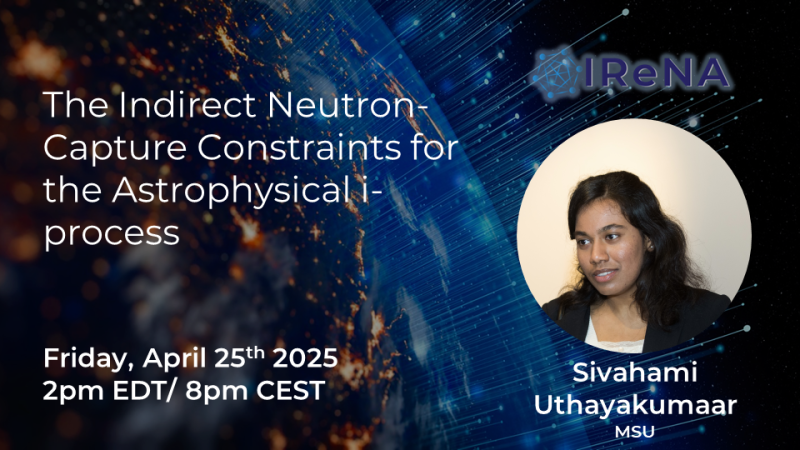Data
The Indirect Neutron-Capture Constraints for the Astrophysical i-process featuring Sivi Uthayakumaar (Michigan State University)

Hosted by: Cameron Angus (TRIUMF)
Abstract: The production of elements produced in stars is one of the main questions that is of critical interest in nuclear astrophysics. The majority of elements are traditionally produced via the slow (s) and rapid (r) processes.
Recent astronomical observations have shown “strange” abundance patterns of Carbon-Enhanced Metal Poor (CEMP) stars, which cannot be explained by the s- and the r-processes alone, indicating that an additional intermediate nucleosynthesis process is required to explain these abundance patterns, known as the i-process.
Nuclear properties needed to predict elemental abundances are relatively well constrained, except for the neutron-capture reaction rates, which are almost entirely provided by theory. Direct neutron-capture measurements, at present, are feasible only for stable and long-lived nuclei. For nuclei with short half-lives, indirect techniques are required to constrain neutron-capture reaction rates. In this talk, I will be discussing an indirect neutron-capture technique, namely the 𝛽-Oslo method, which uses 𝛽-decays to populate states in our nuclei interest. Recent sensitivity studies have shown that Rb abundances are strongly affected as a result of neutron-capture reactions on Kr isotopes, where one reaction of particular interest is 87Kr(n,𝛾)88Kr. In this talk, the first experimental constraint of the 87Kr(n,𝛾)88Kr reaction will be discussed utilizing the 𝛽-Oslo method.
The experiment took place using the CARIBU facility at Argonne National Laboratory, where 𝛽-decays from the 88Br nuclei into 88Kr was implemented. Subsequent 𝛾-rays were identified using the Summing NaI detector, SuN, and the SuNTAN tape transport system.
By utilizing the statistical properties of 88Kr, the 87Kr(n,𝛾)88Kr experimentally constrained cross section has been extracted, and its impact on the astrophysical i-process will be discussed.
